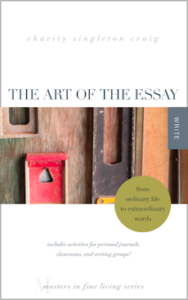William Kent Kreuger’s book, Ordinary Grace, opens with a phone call. There’s been a bar fight, and 13-year-old Frank, the narrator, goes down to the jail with his father, a minister who aims to bail out the town drunk. The scene plays out as if the fight itself is important, but really, it’s just a way to introduce characters and set the scene. Because we know from the prologue that the real inciting incident of the story is the death of a child, a boy killed on the train tracks in New Bremen, Minnesota. And there at the city jail, as Frank’s dad speaks to the officers, we learn that not everyone thinks the death was an accident.
Ordinary Grace is one of my favorite books, in part because of the string of mysterious deaths sparked by the boy on the train tracks, and the quest to know the truth about each one: accident, nature, suicide, murder? But though Kreuger is better known for his mystery and suspense books, this literary treasure doesn’t fall neatly into the mystery genre. It’s rich scenes and extensive character development slow the book down; the typical red herring of most mystery novels seems absent here; and in the end, the cases of the deaths aren’t all solved.
And we also have the train, often passing through New Bremen, portending death and tragedy with each haunting whistle. For instance, on one occasion Kreuger describes an approaching train as a character talks about his suicide attempt. Later, Frank, the narrator, is being interrogated about his sister’s disappearance, and again, as the scene closes, the train comes rumbling through town. The presence of the train is not ubiquitous; instead, it winds its way through town, and our imaginations, occasionally, reminding us of all that’s at stake.
Kreuger’s train is an example of literary technique called adumbration, from the Latin adumbrātus, which means “to shade, represent by means of light and shade, sketch, outline.” In literature, adumbration is a type of foreshadowing, though it’s more subtle, more organic, than we think of foreshadowing itself. In his book Writing Life Stories, Bill Roorbach says adumbration is best used to describe “those instances in which meaning attaches to objects that appear in scenes.” He uses the example of a handshake. If a character shakes hands on a sinister deal early in the book, a later handshake will give us the feeling of doom.
I think of adumbration when I read about Scott Russell Sanders’ buckeye, in his essay by that name. The piece starts with Sanders describing the buckeyes he keeps in a wooden box on his desk. They used to belong to his father, and Sanders “inherited” them when his father died. He describes them as “shriveled now, hard as pebbles, yet they still gleam from the polish of his hands.” His father kept them in his pants pocket based on local lore that buckeyes would stave off arthritis. And based on the anecdotal evidence Sanders provides about his father’s penchant for woodworking, we have to believe the buckeyes might have worked.
Except we also know from the first sentence that his father has died. So throughout the essay, each time Sanders references the buckeyes, we feel the complexity of small hopes and deeper suffering. Even going back to reconsider the title, then, we can infer that this essay is about more than his father’s arthritis and death; it’s a larger story of the same kind of small hopes and deeper suffering those small, polished nuts symbolize. Indeed, Sanders paints a portrait of an area in Ohio where he grew up, where small efforts to make a life there were all washed away when a river was damned and the area was turned to, as Sanders describes it, “scummy playgrounds for boats.”
In this way, you might say that adumbration rests somewhere between foreshadowing and symbolism. It’s not simply hinting at what’s to come; it’s letting an object or a place “have some useful meaning in it,” Roorbach says. Sometimes, the meaning is apparent from the beginning, and skilled writers will understand the limits of adumbration, like an artist who adds shading to a portrait to make the features stand out. Other times, the hidden meaning and the subtle implications reveal themselves over time, and the author awakens to their presence in the writing as readers will in the reading. Often, as in the case with both Ordinary Grace and “Buckeye,” the adumbrated image becomes the very thing to carry the story.
Try It
Want to try your hand at adumbration? This exercise will give you a sense of how to find hidden meaning and subtle foreshadowing in the objects you write about.
Write out the scene of a recent incident in your life, being sure to include as much action and dialogue as you can. Then, go back into the scene of your memory, looking around this time for sensory descriptions of the place, people, objects, weather, and more. On a third pass, look over the descriptions carefully to see what showed up from memory. Do any of these objects carry more weight than you first observed? With all the subtlety of adumbration, how can you highlight these objects to point the way through your story for readers?
Photo by Steph Leung, Creative Commons license via Flickr. Post by Charity Singleton Craig.
_______________________
What kind of writer are you? asks Charity Singleton Craig, as she opens you to a journey of discovery about the art of essay writing that explores both practice and reason-for-writing concerns.
- Grammar for a Full Life Book Club: On Becoming Less Possessive - June 16, 2021
- Grammar for a Full Life Book Club: Chilling Out on the Grammar Rules - June 9, 2021
- Grammar for a Full Life Book Club: A Passive Voice - June 2, 2021


L.L. Barkat says
I remember reading The Lord of the Flies when I was in high school and trying, haltingly, to then write stories that had symbols like The Conch. (A little meta on that arises in The Novelist, where the tea basket knowingly presents as a symbol that is not really a symbol: probably more adumbration (emphasizing a sense of being lost), in order to tease my younger writing self (and maybe any writing self that sets out with *A Purpose That the Reader Shall Not Miss,* about this wish to write the next big-symbol novel.) If there’s any symbol at all in The Novelist, it is more properly the Luna moth (which also has its share of tease, knowingly paralleling Moby Dick but then purposely symbolizing something to the contrary of what it’s stated to symbolize).
Which is to say, it can be a whole lot of fun to play around with images that appear more than once and consider why we are actually doing that as a writer. Are we adding something that enhances the experience of the story? Something that dialogs with the story? Or, something that allows the story to dialog with society? I guess, as an editor, this is what I end up asking myself when I read a writer’s piece: Why is this image here? What is its effect? Overall, does it work, or does it distract on the one hand or fall flat on the other? That goes for the single image, of course, but even more so for the repeated image.
You remind me, with this article, that being a writer, a good writer is a complex job indeed. 🙂 Thanks for getting me thinking this morning!
L.L. Barkat says
I’ve been in the kitchen second-guessing the tea basket as not-symbol. Maybe the nuance is that when we really want to do A Symbol we *have* to close the loop on it—like the way The Conch gets broken in LOTF; whereas with adumbration (which maybe could be argued to be a very low-key form of symbol), we can let it drift off and leave questions, the image already having done its main job of stirring feeling along the way.
Charity Singleton Craig says
Laura — I love the way you ruminate about adumbration here in the comments. I think “low-key symbolism” might be a great definition of adumbration, as I understand it.
I first learned the word in Writing Life Stories by Bill Roorbach. He talks about a student writer who drafted a violent scene from her life that involved a stove, and then later, when she inadvertently included a stove in another scene, it seemed like new violence was possible. When Roorbach pointed that out to her, she was surprised. She hadn’t even realized that second stove was there, but then she went back into the text and included stoves everywhere. It was too much, Roorbach said. In the end, the symbolic item was included barely more than when it had appeared inadvertently, to let it adumbrate or shade the meaning, remaining low key and thus more effective, as it were.
I think the idea that symbolism has a more closed loop than adumbration is an apt distinction.
Now you’ve got me thinking!
L.L. Barkat says
The girls and I had a rousing good follow-up conversation about this, and I was wishing we all (including you, Megan, etc.) were in a room together, talking shop 🙂
One thing we finally decided: a symbol will often speak what a character or group of characters cannot (whether they are not conscious of the truth it is putting forward or whether they are, somehow for plot reasons, simply unable to speak it). I thought this was an interesting theory, both on the book level and maybe even from there on the societal level (in other words, how the book then speaks in a society that cannot speak its truths). Thus, the symbol becomes itself a kind of powerful prophet where nothing else was able to stand up and deliver. For this reason *A Symbol* has to be handled extremely deftly and incisively by the writer, whereas a little foreshadowing or adumbration could be a bit more drifty in how it enters into a work.
I love the stove example. Now I have a new mantra: “Fewer stoves, more heat!”
Charity Singleton Craig says
I love that, Laura! “Fewer stoves, more heat.”
And what you said about symbols … I love that. Maybe that’s why certain causes end up with a person as a symbol or spokesperson. She is the one who speaks for the group when others are otherwise unheard.
Megan Willome says
Charity, I didn’t even realize adumbration was a thing until I read about it in your “The Art of the Essay.” But I think it is what often makes me love a particular novel or essay.
Honestly, this is one reason I like having things on Kindle, because I can search for a word like “stove,” once I’ve realized it’s doing some heavy lifting, and then, perhaps, find it again and notice significance I missed the first time around.
Charity Singleton Craig says
What a great way to utilize technology! For books you have in print but not on Kindle, you could even use the Amazon feature “search inside.” It would give you a page number to look at, even if the page wasn’t visible in the search feature.
I had not heard of this before reading Roorbach. I think adumbration is what adds texture to essays and novels.
Jody Collins says
Adumbration.
Okay, now I know another remarkable word, and I so enjoy learning new words (even if I never use it!) Thank you, Charity.
Charity Singleton Craig says
But I do hope you’ll give this one a try, Jody, or at least look for it in your reading. It adds so much texture!
martin gottlieb cohen says
pond strider the silence of Cassiopeia
Autumn Moon Haiku Journal 2:2, Spring/Summer 2019
https://www.autumnmoonhaiku.com/home/autumn-moon-haiku-journal-22-springsummer-2019